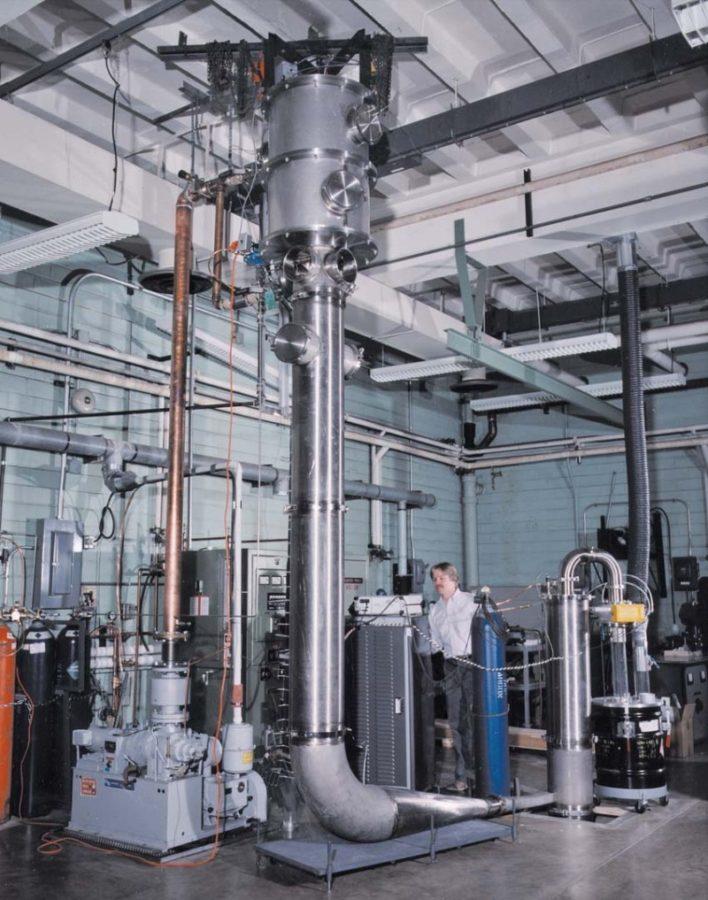Celebrating 65 years of research
May 28, 2012
Only authorized personnel with special access cards are allowed to enter. Visitors must speak through an intercom and be escorted inside the building. But behind the secure doors, colorful posters with a timeline of events hang on display cases, walls and elevators.
The U.S. Department of Energy’s Ames Laboratory is celebrating its 65th anniversary.
Ames Lab is the only government research laboratory in the nation located on a university campus. It was officially established in 1947 after the Ames Project successfully developed a method to purify uranium for the war effort. Purifying uranium was an essential component in creating the atomic bomb. Under the leadership and expertise of leading scientists Frank Spedding and Harley Wilhelm, Ames produced over 2 million pounds of uranium for the Manhattan Project.
Today, the Ames Lab continues its work in rare-earth metals; its focus, however, has expanded to developing new materials that solve global energy problems. By combining chemical, physical, engineering, mathematical, materials and biological disciplines, Ames Lab fosters a collaborative, innovative environment to achieve the high standards it sets for itself.
One of Ames Lab’s most recent accomplishments was the development of lead-free solder, invented by Iver Anderson. Solder is basically metallic glue that connects electronic parts and can be found in smartphones, tablets and virtually any other technological device used today.
While developing an environmentally friendly and cost efficient solder was no small feat for Anderson and his team, these benefits are only part of the victory for this invention. As of 2011, lead-free solder generated the most income in the history of Ames Lab and Iowa State, producing almost $40 million in royalties. Lead-free solder is licensed to over 60 companies worldwide.
Bruce Harmon, deputy director of Ames Lab and Distinguished Professor of Physics at Iowa State, said the new ideas generated by such a diverse, global community are what excite him about his work.
“We’re not necessarily in a patent game … but [it’s about] the basic science part of it — the fundamentals of how we do these things, how we develop the ideas,” Harmon said.
While a breakthrough scientific discovery is the ultimate reward, things such as patents, prestigious awards and fellowships are nice bonuses. Scientists associated with Ames Lab who have been nationally or internationally recognized for their achievements include Paul Canfield, Kai-Ming Ho, Pat Thiel and Dan Shechtman, just to name a few. Ames Lab and Iowa State have also earned over 30 R&D 100 Awards, which are described as being the “Oscars of Invention.”

















